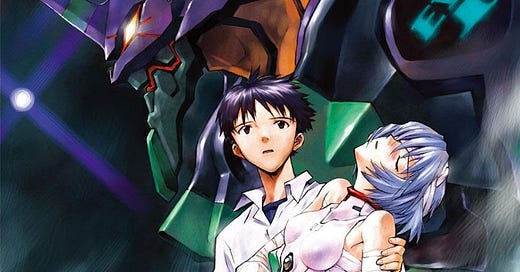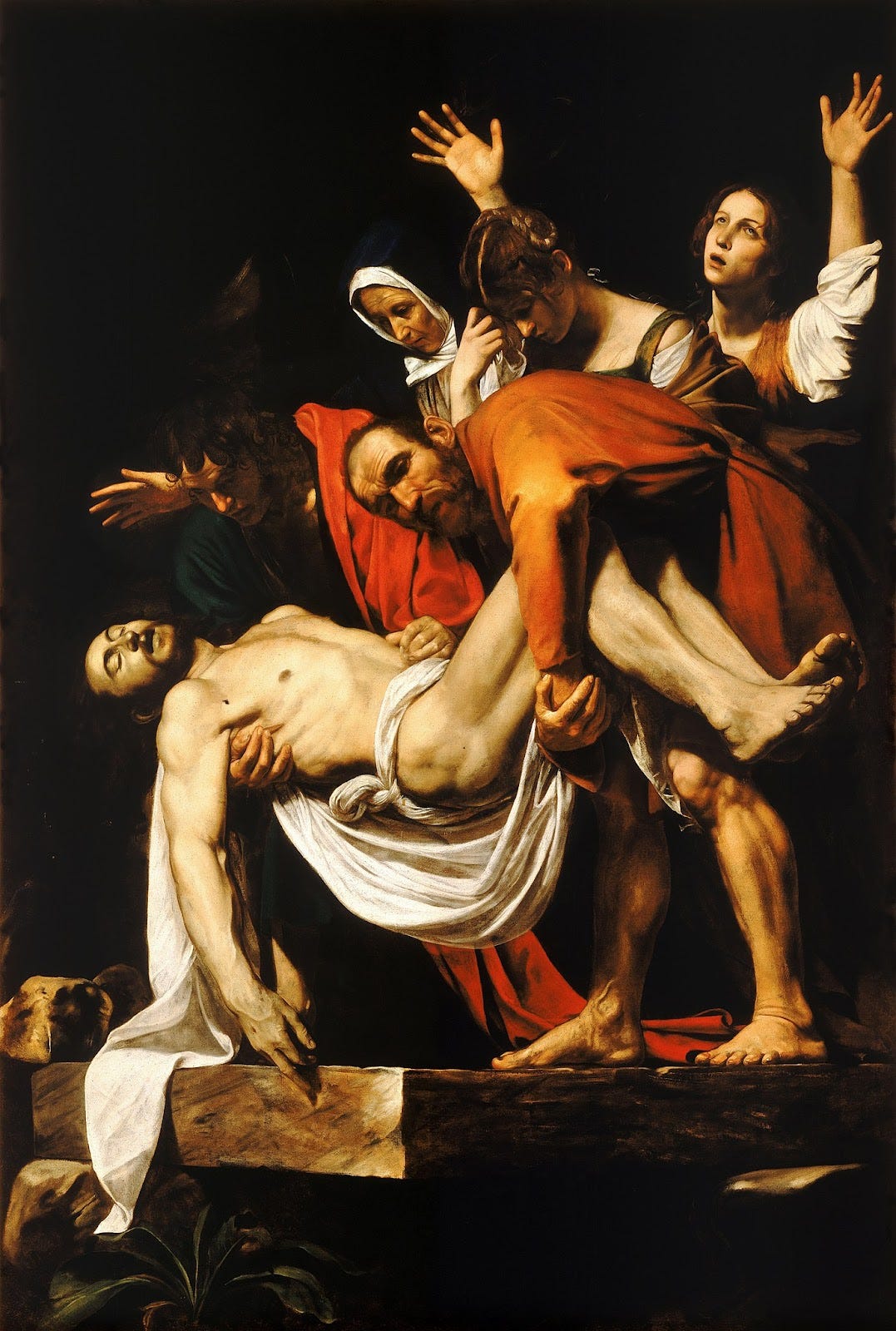The Evangelion Unit as a Christ-like Figure
In his book The Ancients and The Postmoderns, Fredric Jameson gives a special role to the body of Christ within art history. Specifically, he writes that, “the development of the visual arts in the West is unthinkable without the resources of this body” (8). Besides its obvious divinity, or the central role it occupies in a religious tradition, what makes this body so essential to the development of art is that, it “enable[s] the theatrical staging of equally innumerable dramatic—which is to say narrative— scenes” (8). The story of Christ’s body is none other than that of its crucifixion, and eventual resurrection. In this act of martyrdom, his body creates a union of opposites, a “dialectical identification of success and failure, of transcendence and extinction, of life and death” (9). In his suffering, Christ is sanctified. The rich narrative content of this body is found in its dynamic quality, its granting of “affirmative content of even the most unnoble bodies and bodily states” (9). With this in mind, Jameson identifies the body of Christ as a complex, multifaceted figure which allows visual artists to create works of striking significance. Paintings of Christ are not just a depiction of an icon, but an image that has storied mythologies of emotion held within its flesh, and set to burst towards transcendence.
However, in his analysis, Jameson prioritizes a specific quality within the narrative body as crucial to its effects on art. He explains, “the crucial property of the new narrative body, however— one perhaps hitherto mainly achieved in sculpture— is sheer weight and mass” (9). This weight comes through when the body makes its “descent from the cross” (10). In being lowered, the limp corpse is folded by gravity and falls into a variety of poses, gestures, and movements. This “opens up the possibility for what we have called the narrative body,” in contrast to the stiff, standard anatomical position found within the “anatomy theater” of human dissection (10). This is a body that moves, struggles, and eventually, in its lifelessness, “become[s] the sheer mass of the inorganic object” (11). Jameson concludes, “it is this dead body weight that stuns and arrests us in front of these immense canvases, that allows the new painterly lighting to become dramatically operative” (11).
There is another figure in which we can examine a similar weight, which likewise revolutionized the medium it appeared in. This figure is none other than that of the titular Evangelion Unit itself. Mecha fans have often categorized works of the genre into those representing either Real Robot (as scientifically sound as a 60ft robot be, with a focus on detailed political stories), or Super Robot (an automated magical girl that gathers strength in tandem with the powers of friendship). The Eva, however, is neither. It gave to anime a new type of robot: a robot of The Real. Compared to animated mecha of previous decades, which have a flatness that can be blamed on budget constraints, there is a new weight to the Eva. It is this weight that carries the emotional, psychological, and spiritual themes of the series.
The Evangelion Unit has weight. It shakes the frame as it crashes to the ground, taking skylines and forests down with it. It twists and buckles as it pierces angels with supermassive tactical knives and lances. It is destructive. It is costly. It is humanity’s only hope of salvation.
Moreover, the Eva exemplifies Jameson’s description of a corpse that contains opposites. Inside the core of the unit, you will not find Minovsky particles, or a well tuned motor, but the soul of Yui Ikari. She is dead, yet she lives, and continues to protect her only son. The Eva is a man made construction, cold and mechanical, yet it bleeds, and is bestial as it pursues angels on all fours. The various titles of the series speak to this inherent contradiction: “You can (not) Redo,” “You are (not) alone,” Death & Rebirth. The Eva, like Christ’s body, is a figure of potentiality, dynamic narrative, and one blessed with a chance of rebirth, transcendence, and reconciliation.
As seen in Caravaggio’s painting above, Jameson explains that this corpse “demands many hands, it is impossible without a host of other living beings around it, the corpse is thus by necessity profoundly collective, as strange as that may seem” (11). An Eva can not move without its pilot. Likewise, the characters need each other for love, support, and community. They labor over the Hedgehogs Dilemma, as they desire closeness, but fear getting hurt. The moments of catharsis in the series are those in which they conquer this fear and learn to love and care for each other. On the other hand, the motivations of SEELE and Gendo are that of oneness, for all of humanity, with God as something superhuman. Whether on the level of the entire show, or the specific plot reasons for which the Evangelion Unit has been created, this mech serves as a collectivizing entity, a figure which holds religious weight. In giving legs, and flesh, and a soul, to the iconic figure of a “Mecha Robot,” Neon Genesis Evangelion was able to create a momentous series that redefined the entire medium of anime.




